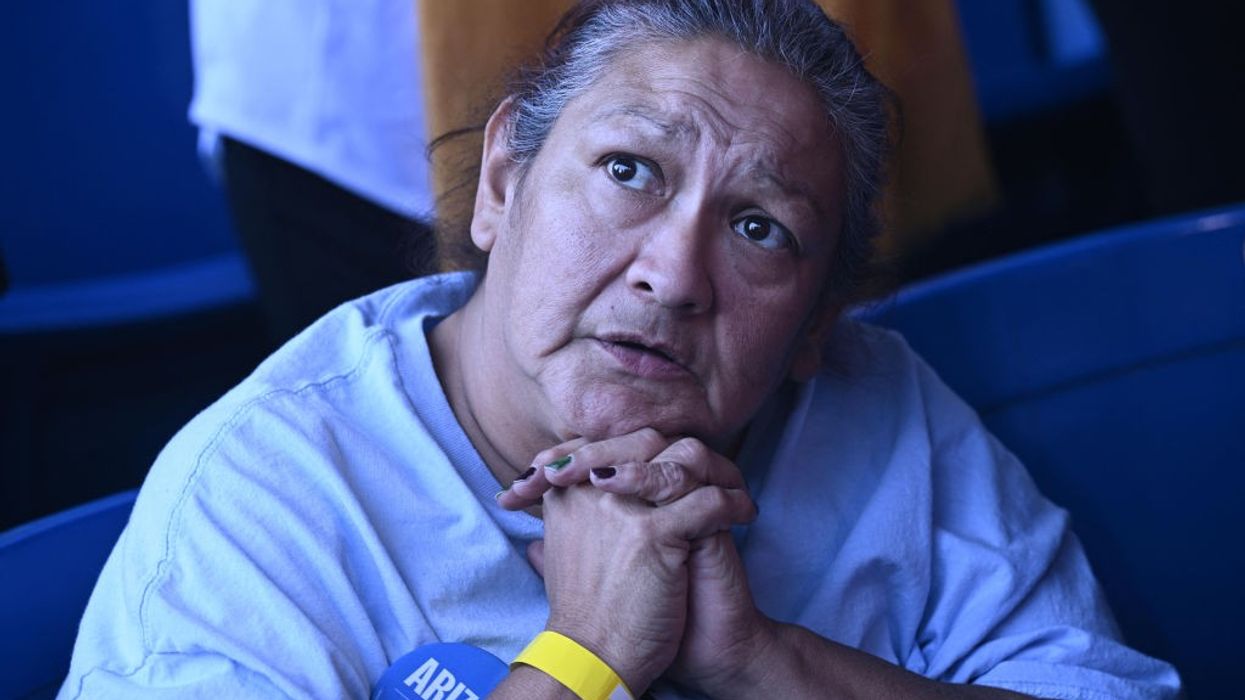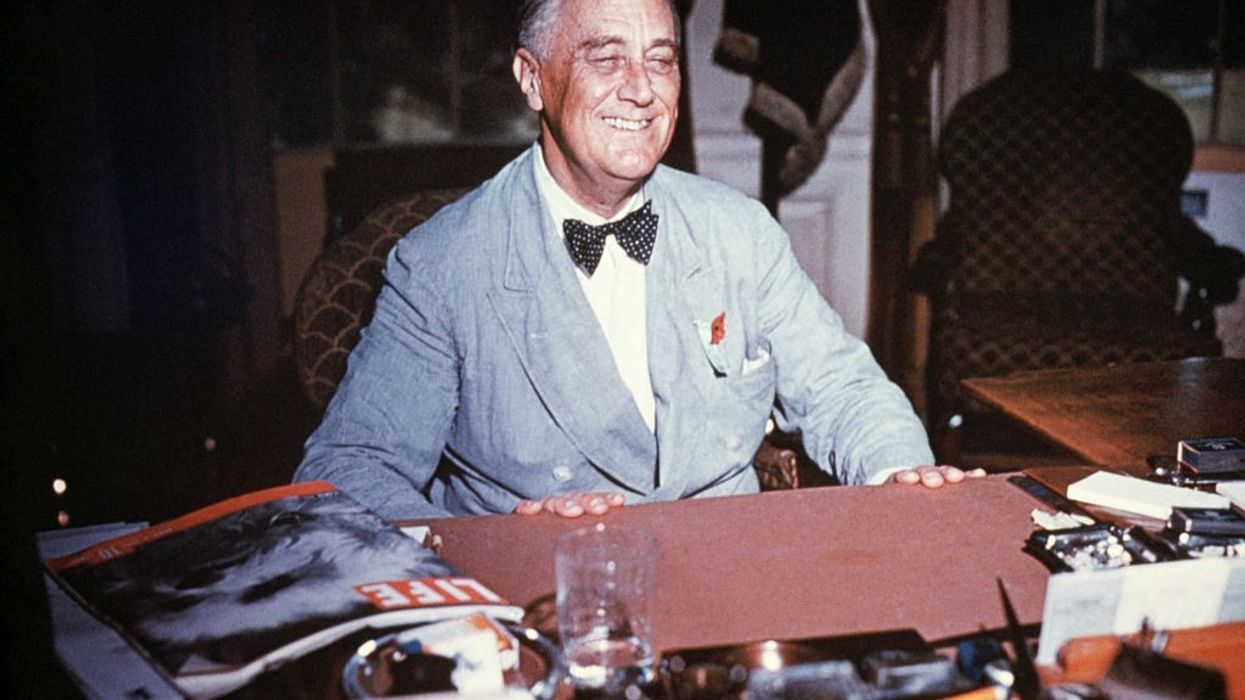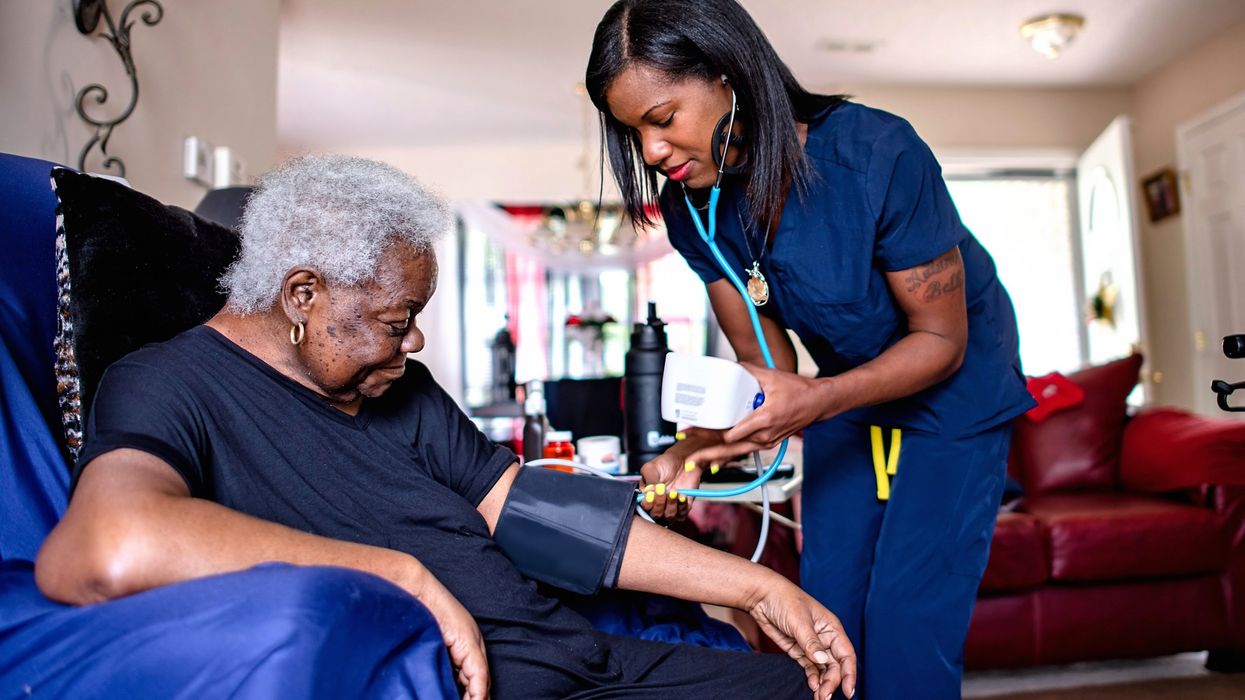Here's Why Harris and Democrats Are the Best Choice for Seniors
This election will determine whether current and future seniors—and their families—can count on the government to keep the promises of Social Security and Medicare and to improve eldercare.
For seniors and their families, the choice in this election couldn’t be clearer. Before Donald Trump took office, our organization did not endorse candidates for president of the United States. But Trump was such a four-alarm fire for us and our members (older Americans across the country), that we felt a duty to endorse Joe Biden in 2020, breaking with nearly 40 years of precedent. This cycle, we have endorsed Kamala Harris as the candidate who will genuinely protect seniors’ interests, including the two programs in our organization’s name, Social Security and Medicare. We have also endorsed scores of candidates for House and Senate as “champions” for older Americans.
From a policy standpoint, this is a no-brainer. Kamala Harris, like Joe Biden, has pledged to protect Social Security and Medicare from Republican proposals to cut both programs—by raising the retirement age, means testing, and reducing COLAs. But she also has endorsed the idea that the wealthy should begin contributing their fair share in payroll taxes, which would go a long way toward safeguarding the financial health of both Social Security and Medicare. With additional revenue flowing in—plus billions of dollars in savings on prescription drugs from the Inflation Reduction Act—we could not only strengthen, but expand, seniors’ earned benefits.
In October, the vice president laid out a plan to expand Medicare to cover long-term, in-home care for seniors (and people with disabilities). That is a historic proposal. Under the current system, seniors must impoverish themselves in order to qualify for long-term care under Medicaid—and may well end up in nursing homes. Otherwise, the main alternative is for families to provide home care, often at a high financial and personal cost.
Kamala Harris also wants to expand traditional Medicare to include hearing and vision coverage. We have been fighting for the enhancement of benefits for decades, because seniors’ health and safety depends on proper hearing and vision care. These coverages were part of President Biden’s original Build Back Better plan, a noble effort that can be revived with a new Democratic president and Congress.
On the other hand, it’s almost laughable that anyone would think Donald Trump is the better choice for seniors and their families. Trump is unserious about policy, except insofar as it helps him score political points. He knows that Social Security and Medicare are tremendously popular, so he claims he will protect them, while embracing proposals that could devastate both programs.
Many of Trump’s public statements over the years do not inspire confidence. He once called Social Security a “Ponzi scheme,” comparing America’s most successful social insurance program with a petty criminal enterprise. This year, he said he’d be “open” to cutting “entitlements,” a comment his campaign tried to walk back in the face of understandable backlash.
Each year that Donald Trump was president, he submitted White House budgets that would have cut Social Security and Medicare by billions of dollars. He recklessly suspended the FICA payroll tax during the pandemic and said that he hoped it would be “eliminated” entirely, never mind that this is Social Security’s main funding source. Now, he proposes to repeal taxes on Social Security benefits that were put in place during the 1983 reforms (signed into law by President Reagan) to help fund the program.
The Center for a Responsible Federal Budget, hardly a liberal group, estimates that Trump’s plans would cost Social Security up to $2.75 trillion over ten years—and would accelerate the projected depletion of the program’s trust fund reserves by three years. That’s just six years from now!
In the end, though, this election comes down to values. Kamala Harris and her running mate Tim Walz came from the middle class and understand the struggles of working Americans. Harris was raised by a single mother in a modest Oakland neighborhood and cared for her aging mom when she was dying of cancer. Tim Walz lost his father at age 19, and credits Social Security survivor benefits with keeping his family from falling into poverty. These candidates’ lived experiences inform their policies affecting seniors and families.
The Harris/Walz ticket reflects the preferences of most Americans across when it comes to seniors’ earned benefits. Public opinion surveys consistently show that bipartisan majorities of Americans oppose cuts to Social Security and Medicare, and agree that the wealthy should begin contributing their fair share. On the other side, the now-infamous blueprint for a second Trump term, Project 2025, calls for radical changes to Medicare that would end the program as we know it. Meanwhile, the Heritage Foundation, which authored Project 2025, has advocated raising the Social Security eligibility age and other cuts to the program.
Donald Trump has (unconvincingly) attempted to distance himself from Project 2025, but he is a member of an elite financial class that focuses on lining the pockets of the already wealthy and powerful. It’s no coincidence, perhaps, that the GOP has recruited millionaire candidates for Senate in key battleground states who, unlike their Democratic rivals, do not represent the interests of working people. Many of these candidates have supported raising the retirement age and privatizing Social Security, while championing more tax cuts for the rich. Their hostility to the interests of seniors is apparent. The GOP Senate contender in Wisconsin even suggested that nursing home residents aren’t truly capable of voting.
This election will determine whether current and future seniors—and their families—can count on the government to keep the promises of Social Security and Medicare and to improve eldercare. Growing old in America is increasingly costly. Without these bedrock programs, not only seniors, but their family members in the “sandwich generation” will find it even harder to navigate the cycles of life. In this clarifying light, the choices for President and Congress shouldn’t even be close.

